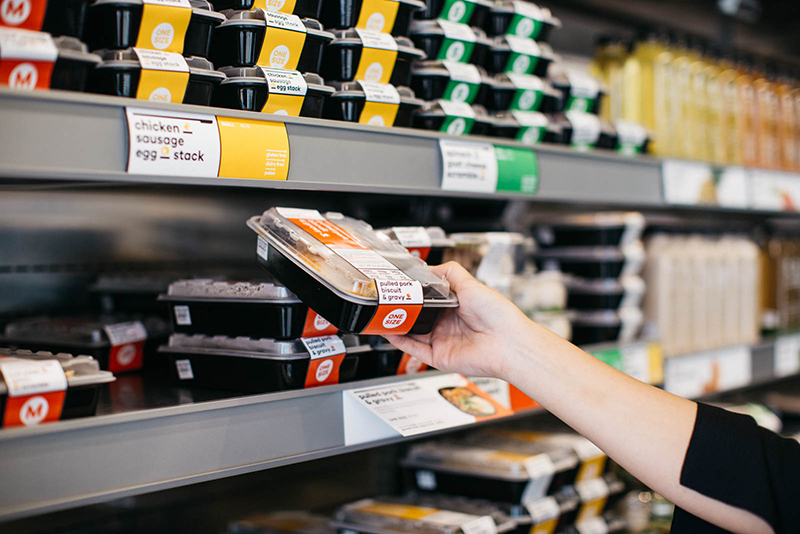Meal kits is a tough business, just look at the recent news around Blue Apron, the stock is tanking and one stock watcher says there’s “no surviving” the crowded market which now counts Walmart and Weight Watchers as new entrants.
That may be overblown, especially in this red-hot consolidation cycle, but there’s no denying that meal kits are walled in by some tricky competition and more than 100 years of consumer grocery-shopping habits.
To build out its niche and avoid looking like Blue Apron—and hopefully avoiding its same fate—Snap Kitchen has gone through some drastic changes in the past few months.
“The last 90 days have been really eventful for the business,” said Jon Carter, chief digital officer and CTO at Snap Kitchen. “We closed our Chicago market, since launched a subscription platform in our meal plan business and we centralized our production in Fort Worth, Texas. So it was a lot of major strategic changes.”
Industry watchers probably saw the news, and it didn’t look great. The Chicago office closed, and a few retail locations closed in other markets and staff was cut significantly. Ultimately, 150 staffers whose jobs were cut had the option to move to other locations or take 60 days of pay and walk.
At the same time, the company received some investment capital to usher in the new way of doing this. That included a major redesign of the app, the loyalty program and several tweaks to the customer journey. It also meant a renewed focus on wholesale and a new subscription model.
“It comes back squarely to the fact that we became very conscious on the customer experience for Snap first and foremost,” said Carter. “You can quickly get into being too many things, so it was about getting back to our core business and then returning back to wholesale as an opportunity.”
He said lessons were gleaned from Snap Kitchen’s best customers, which illuminated how fervent customers used the brand. In that process, Carter saw that it wasn’t just about grab-and-go meals.
“I didn’t really get a full appreciation for this until I went out to the field. I was in Philadelphia and we visited a woman’s home,” said Carter. “She told us her customer journey. What we found is that our best customers use us as a grocery replacement, so they’ll stock up for several days of food, for some that might be breakfast, lunch and dinner or lunches or just breakfast on the weekend.”
That information became a focal point and helped the team right size the subscription model. Users can now dial in on their diet of choice, be it paleo, Whole 30, low carb, high protein or a good healthy balance. That means instead of pouring over recipes and ingredients, they can start with a high-level diet and pick and choose only meals that fit the bill.
Anyone who’s been on one of those diets and spent what feels like hours looking for hidden sugar or sneaky carbs knows how freeing that is, and Carter said it’s working well so far.
“We’re seeing early signs that we have attracted a great deal of customers directly into that subscription model as opposed to converting them with every purchase,” said Carter.
That brings predictability to both sides of the customer journey, and allows Snap Kitchen to make just what it needs for subscribers; which means less waste, too.
The new app has already pushed digital sales. Prior to the change, digital was 20 percent of the business, and in the months since the redesign, it’s grown to 30 to 40 percent of daily sales. Loyalty has been integrated into the app instead of a key-fob system used before, making it easier to watch loyalty points stack up.
It also allows for some more transparency into the retail locations and what’s in stock. That was an issue for customers seeking out some of the best selling items.
“So the new app helps because I can go see how much bison hash is on the shelf or the turkey chili that I love,” said Carter. “So I have visibility into that and (it) saves me time.”
As for the wholesale business, it’s growing. Carter said any pains in the last several months ultimately become growing pains, and the early indicators they’re seeing are positive.
Of course there is more work ahead, new functionality is coming to the app including more ability to customize the Snap Kitchen offerings. And watch for more marketing around the diet lifestyles as the brand aims to communicate what the brand learned by exploring that customer journey.
And when they’re ready to expand again, don’t expect a big push like they did in Chicago. The future will be more strategic.
“As we look to expanding again, I think we have an entirely different perspective on how to enter a market. On some levels, you look at the site selection for retail stores, now you’ve got the complimentary benefit of digital and delivery so we can afford to be a little more spread out on the map,” said Carter. “So there are different dimensions in expansion now when we get to it, but right now it’s all about super serving our customer.”


